Tuanshan is a handicraft that embraces tradition and innovation, Alexis Hooi and Zhang Li report in Guilin, Guangxi Zhuang autonomous region.
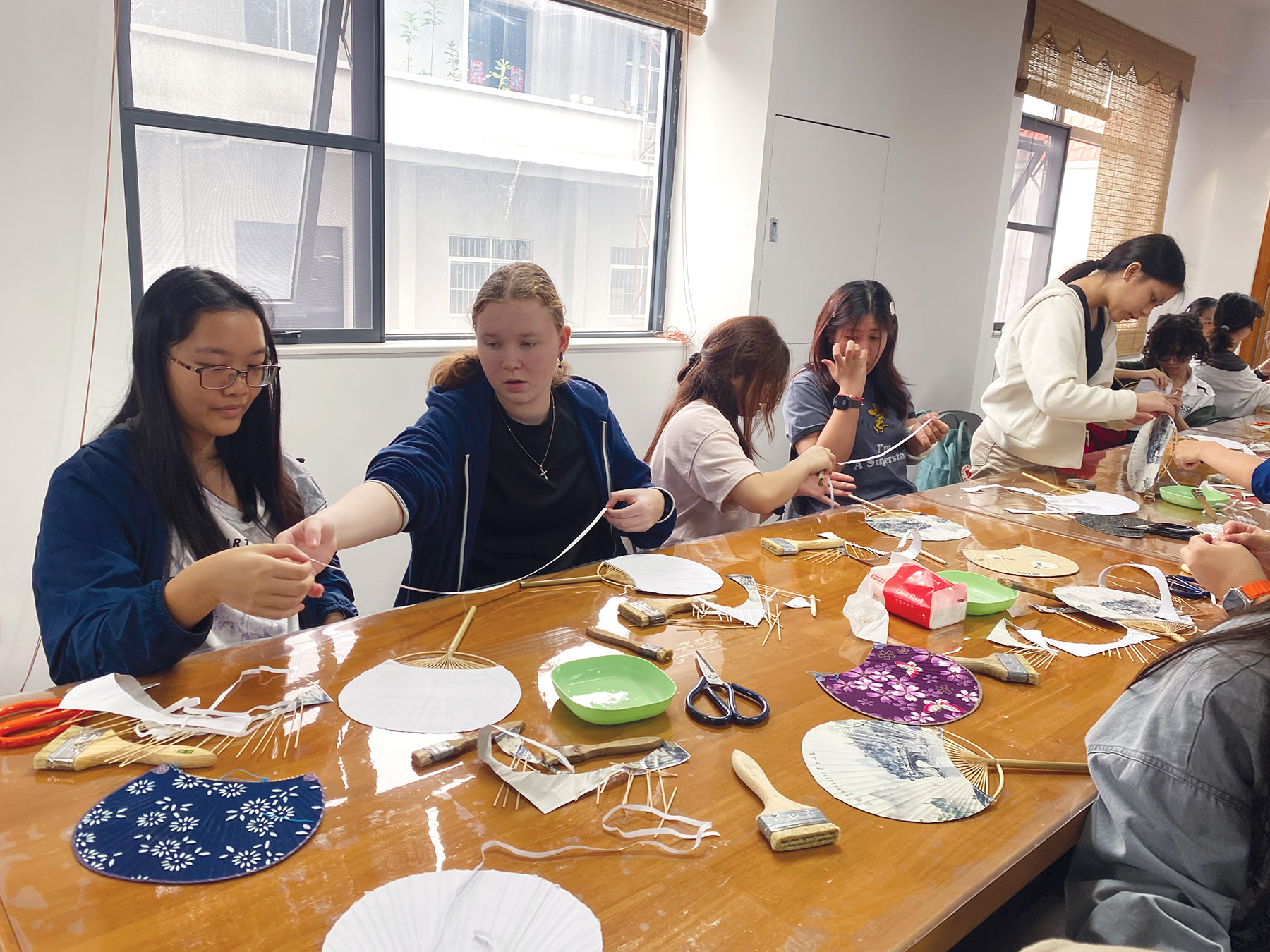
At the height of summer, work at Huang Shuofu's factory was heating up, with more than 20 employees rushing to fill orders for his local specialty product — Chinese tuanshan fans.
The task was particularly pressing this time because they were making tuanshan exports for an international luxury fashion brand, which specifically requested nearly 7,000 custom-made versions of the traditional handicraft.
"Our fans symbolize Chinese culture and heritage, and are prized works of art," says Huang, 75.
READ MORE: Cultural roots spread in elegant style
The popularity of tuanshan can be traced to the Han Dynasty (206 BC-AD 220). The round fans resemble a full moon, symbolizing auspicious union and happiness. Their use extends beyond being tools for tolerating the scorching summers to reflect high status and taste.
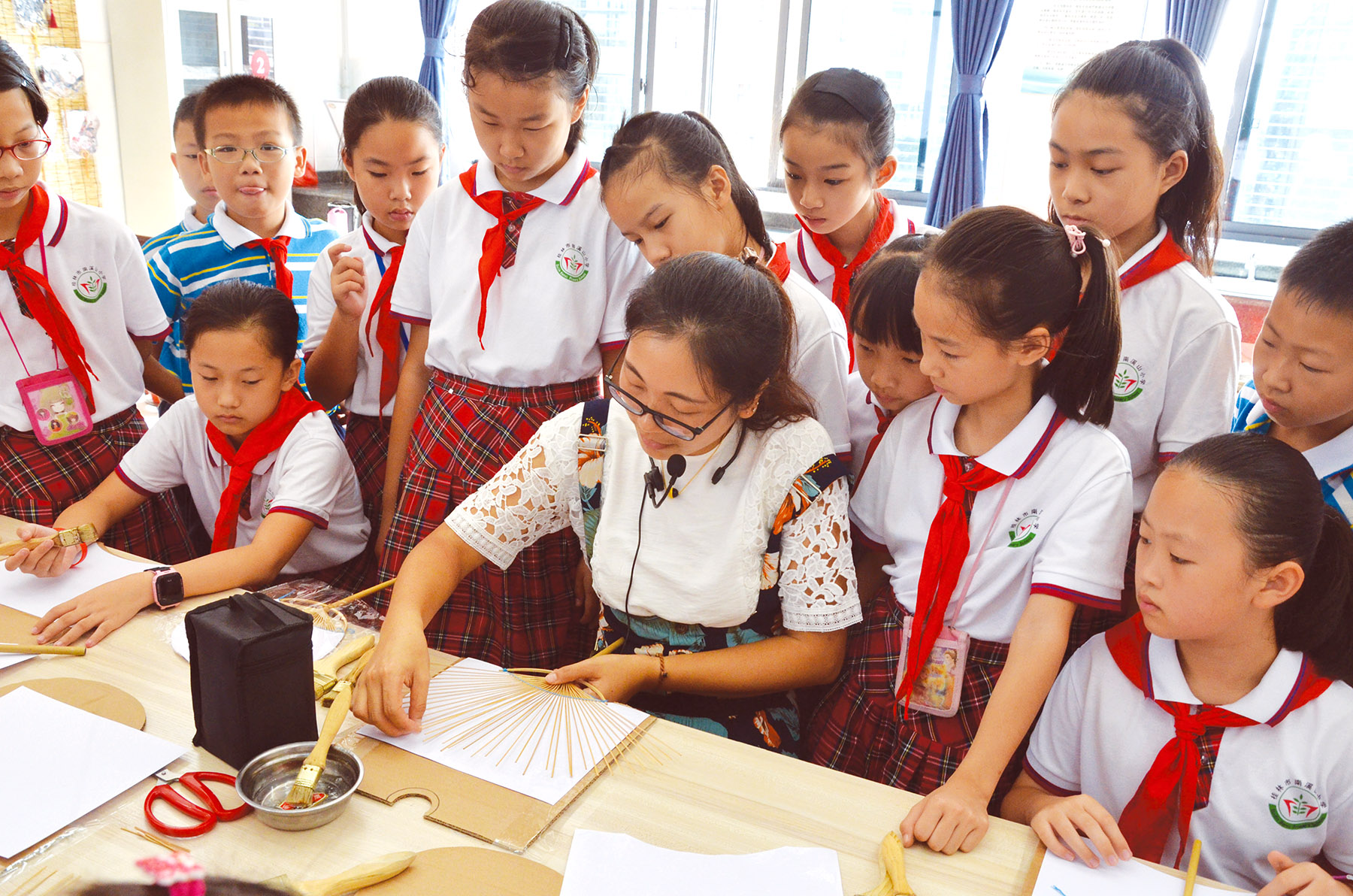
Huang is a fourth-generation master craftsman of the fans, which are traditionally made with bamboo that grows abundantly in his hometown in Guilin city of South China's Guangxi Zhuang autonomous region.
He has won major accolades at home and abroad for his work in preserving and promoting tuanshan as an intangible cultural heritage. In 2013, he was asked to craft two fans adorned with ethnic Zhuang embroidery to be presented to then-UN secretary-general Ban Ki-moon, who was visiting China.
Huang's fans are still made the traditional way, with bamboo strips and sticks for frames and handles assembled by hand. Paper, silk and cloth on which paintings, calligraphy, embroidery and other designs complete the product.
He is also constantly innovating and adding features to his creations, such as a distinctive ring-ribbed base to connect the fan frame to its handle.
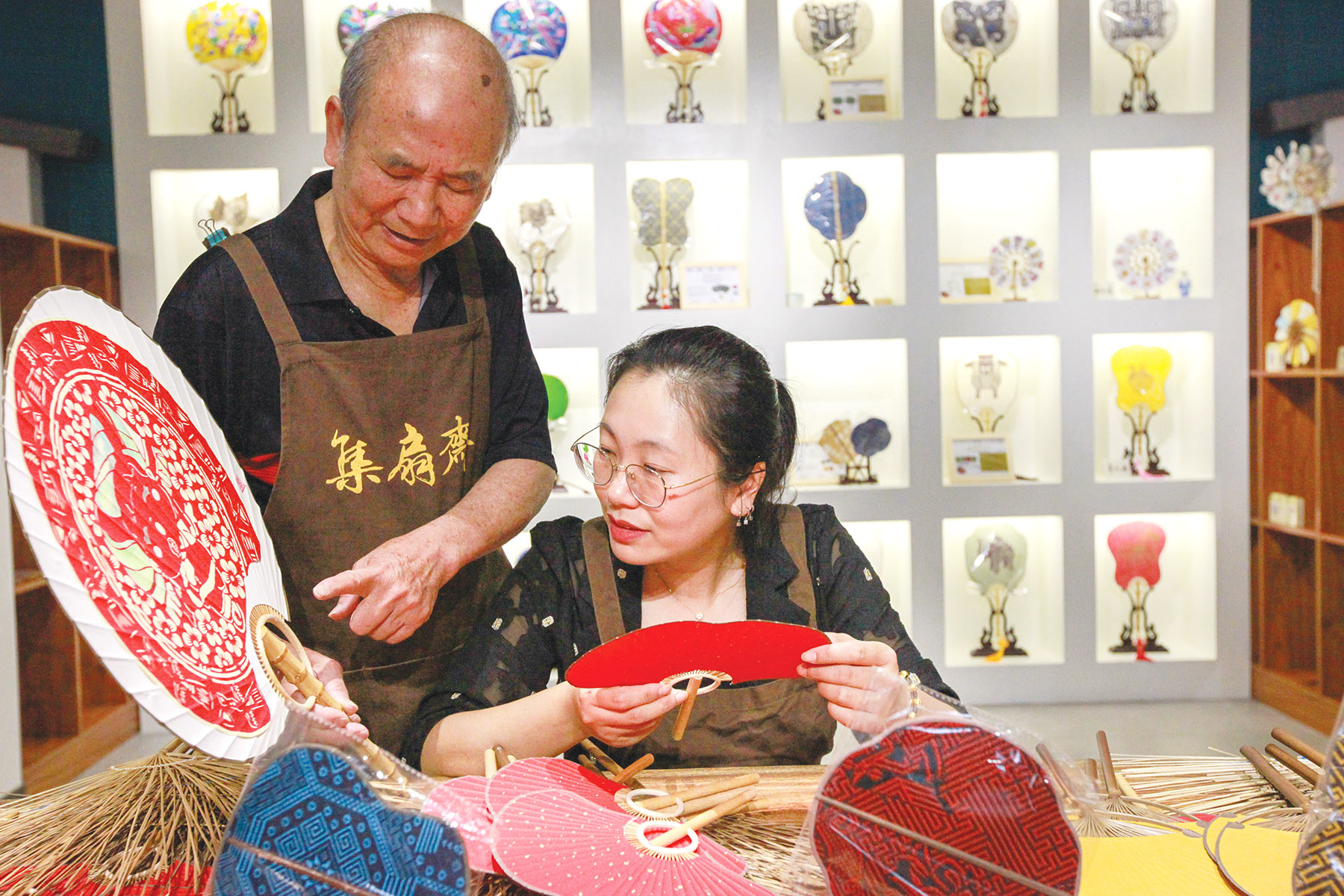
Tapping trends
"We need to keep up with new trends and incorporate these into the traditional elements as much as possible while retaining the original essence to continue sharing this heritage with people at home and abroad," Huang says.
He adds that the group has obtained over 30 national patents and exported products to major overseas markets including South Korea, Japan and Singapore.
His daughter Huang Keren, 40, who helps run the family's business operations, such as its marketing and outreach, says daily production can hit 5,000 pieces, with about one-fifth for export.
The latest digital trends, such as livestreaming, have boosted e-commerce to make up a major part of the business, she says.
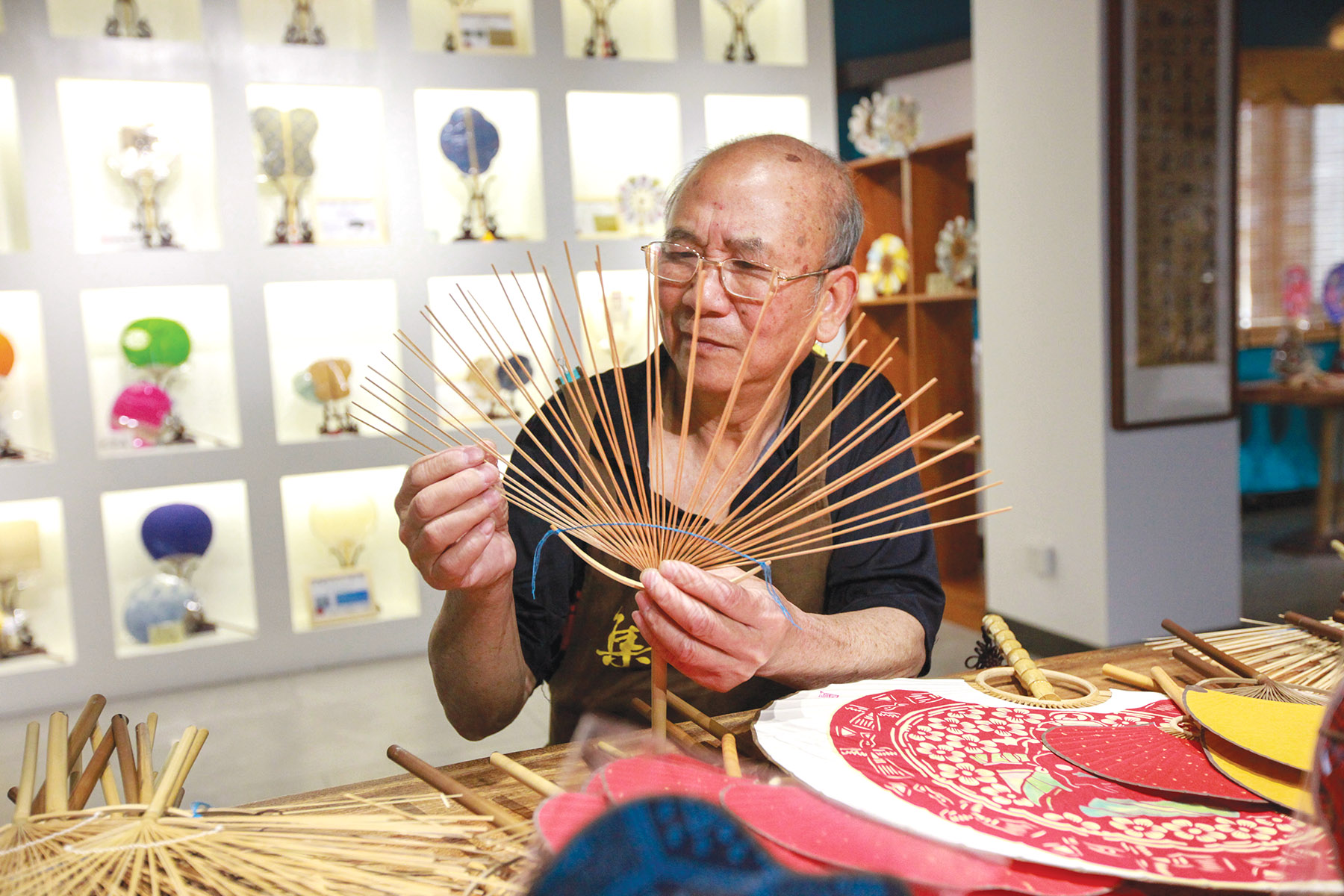
The recent guochao trend, or showcasing traditional Chinese cultural elements in a variety of fields such as clothing, has also contributed significantly to growth, she says.
"Many of our customers include parents buying fans that showcase the best of traditional Chinese culture, like copies of famous paintings, poetry and calligraphy, for their children," she says, adding that mini DIY kits for young customers to assemble their own fans are also popular.
Huang Shuofu says that, as part of his responsibility in passing down the intangible cultural heritage to future generations, he also runs workshops and classes for children and adults, as well as collaborating with cultural institutions like museums, to make sure the tuanshan tradition "survives and thrives".
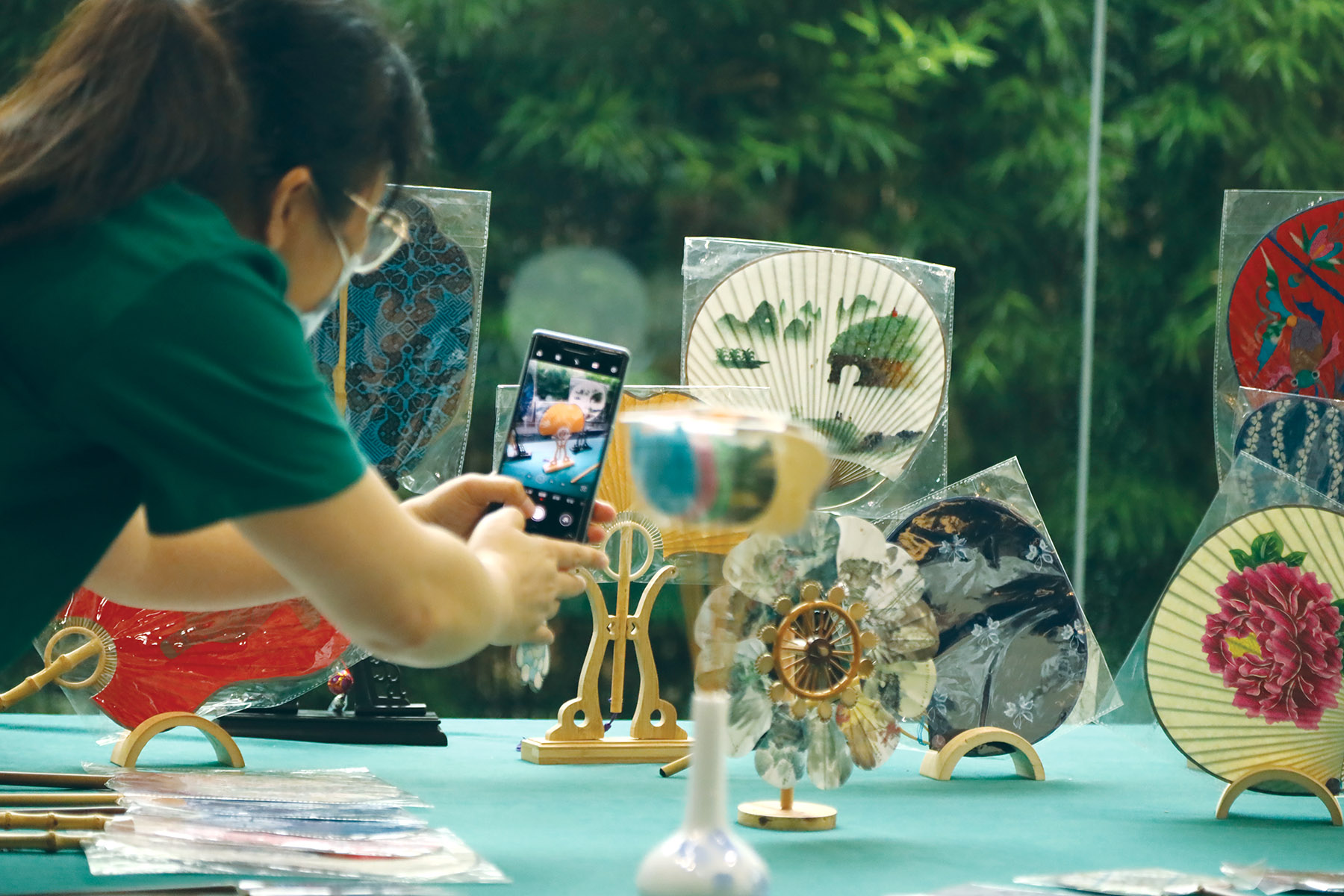
Similarly, sustainable, green practices are a priority, he says, especially since his creations rely on natural bamboo as a major material.
"We minimize our waste and discard as little as possible," Huang Shuofu says. "I recycle the bamboo strips, cloth and paper and try to find new ways to use them, such as for bookmarks, stationery and other smaller-sized, related products."
In line with sustainable, inclusive development, tuanshan production cooperates with local rural communities.
ALSO READ: Casual chat has creative repercussions
For villager Zheng Ming, harvesting bamboo through cooperatives and other production channels to provide the raw material for Huang Shuofu's fans in the past three decades has helped improve his family's previous subsistence livelihood in line with rural revitalization.
"We help provide 600,000 to 700,000 pieces of bamboo every year and our income has increased significantly, three to four times higher than before," says Zheng, in his 70s.
"We make our tuanshan by blending tradition and innovation, protecting our heritage, and promoting it together," Huang Shuofu says.
Contact the writers at alexishooi@chinadaily.com.cn


